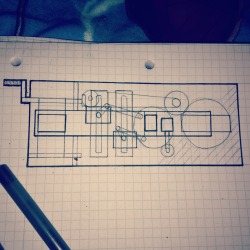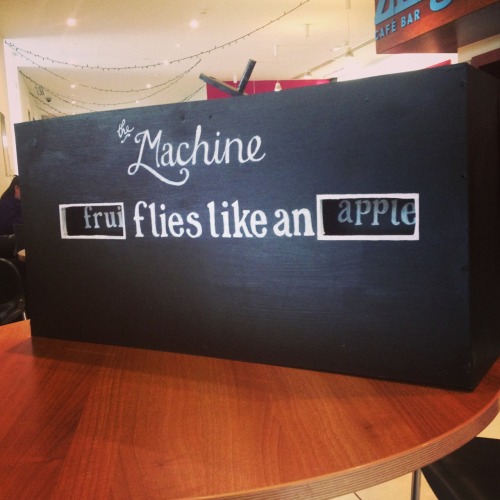Hopefully in our performance, one thing that really came across clearly was how much work had genuinely gone into the final product, both overall and in each installation. In my opinion, this was never more relevant than in ‘the Machine’.
The Machine did not have any academic inspiration behind it. The Machine came to life when one day Scott and I were talking about interactive elements of performance and how they are great when they are original. Here, the idea of the Machine was born.
There was no initial plan for how it might function, what it might look like, or what it would do, until we decided that its two main components were being visually impressive, and utilising some sort of basic engineering to reinforce a theme within language.
We researched here by looking at phrases, quotes or even other people’s works to see if we could find any starting point in a phrase that is both simple, yet refreshing in its message.
I stumbled upon this:

A quote by Laurie Anderson which was a great starting point for letting us see how effective such a short phrase can be to give you a new perspective. This let us realise that the machine could be used to take an ordinary phrase, and distort until it forces the audience to see it in a new light.
After hearing about the phrase ‘time flies like an arrow, fruit flies like a banana,” and its ability to confuse artificial intelligence, I read further into it:
“The sentence, “Time flies like an arrow,” was interpreted by a computer as meaning ‘A certain kind of a fly, called a ‘time’ fly, has a liking for arrows.’ This may seem like a unusually silly interpretation, but the same interpretation is perfectly all right in a sentence such as “Fruit flies like a banana,” because fruit flies are a certain category of fly that have a liking for bananas. So the difficulty was not that the computer constructed a totally implausible interpretation of the sentence, but rather, that it did not have enough contextual knowledge to resolve the genuine ambiguities in the sentence. Ambiguities abound in ordinary language. When human beings have the right contextual knowledge, we resolve such ambiguities very quickly. But without context, we encounter the same difficulties that hobbled the early computer models of language comprehension.” (The Cognitive Revolution in Psychology)
This was perfect, as its culturally relevant, and fit into our ideals: playful, simple and got our point across without making it didactic.
The machine was then underway. Initial sketches looked like this:

but upon realising we had no experience, tools, or space in which to build this, the machine became more simple as time went on.
Ultimately, it ended up looking as we’d hoped, and was a hit in the performance.

Works Cited:
Bernard J. Baars, The Cognitive Revolution in Psychology, (London: Guildford Press, 1986) p.167.